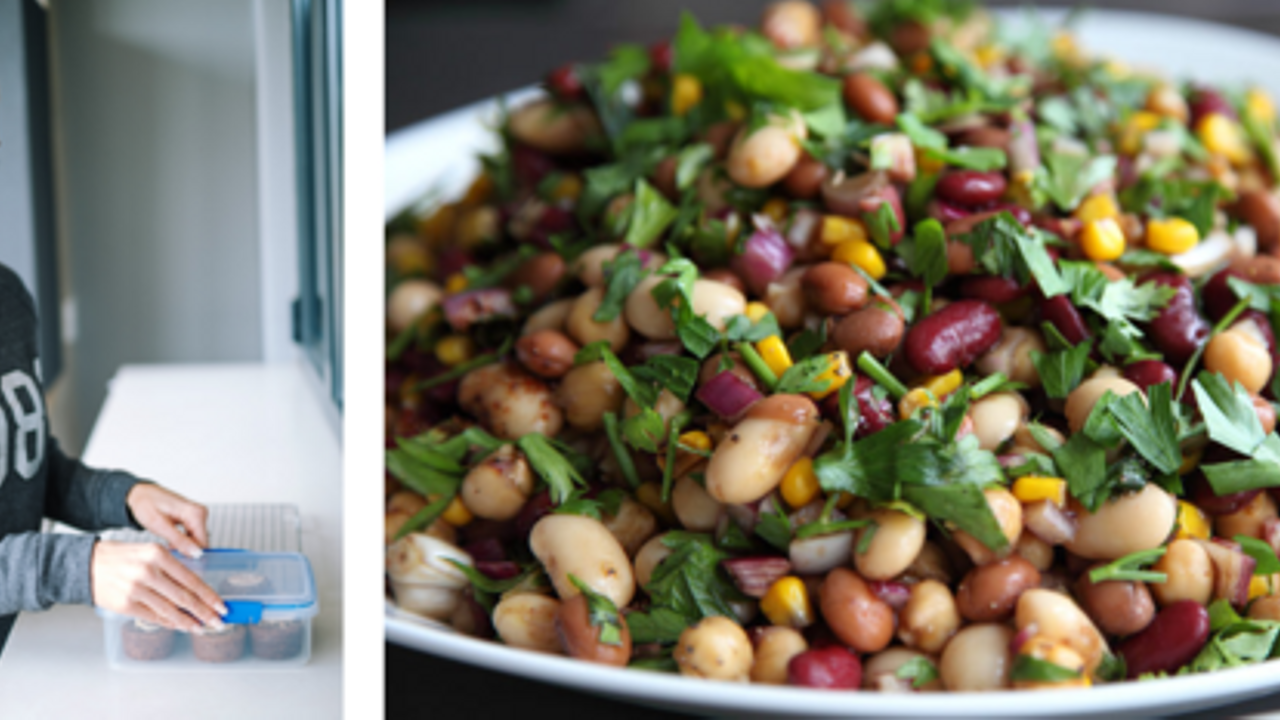6 ways to create cheap healthy meals
Feb 23, 2021
I often hear people say that they can’t afford to eat healthy, but I beg to differ! It really is possible to create cheap, healthy meals and continue to put your health first – even amid tough economic times. I have a few simple tips up my sleeve to help you stay on the right track…
ALSO SEE: Easy ways to love your leftovers and cut food waste
How to create cheap, healthy meals
1 Plan and prep ahead
If you’ve been reading my blog for a while, you’ll know I’m a huge fan of planning my meals for the week ahead. Not only does this save me time and effort, it allows me to consider my budget and put together a smart shopping list. To keep costs low, I look at what my family and I will eat in a week.
So, if I want to cook a more expensive meal, I’ll plan to cook a few budget-friendly meals too, to balance it out. A good example of a cheap, healthy meal is my vegetarian bolognaise which you can freeze in bigger batches, or a big green salad with chickpeas or beans for a protein punch.
2 Shop smartly
A great low-cost way to eat well is to choose seasonal, local produce and only buy what you going to cook rather than wasting foods. For instance, I often shop at local fruit and veg stores on weekends, and only buy what I need for the week ahead. If you have a larger family and you know you’ll get through a whole bag of potatoes, for instance, then by all means buy the bag, but if you have a smaller family – then only purchase what you need.
Shopping seasonally is much more cost-effective than buying foods completely out of season. Seasonal foods are also more likely be locally grown which is important not only to support local farmers but to ensure the food you eat is nutritious and hasn’t been loaded with chemicals to see it through the shipping process.
3 Go meat-free
The other day, I had a chat with Tammy Fry, Marketing Director of Fry Foods and we both agree that even if you don’t want to cut out meat, fish, chicken or dairy entirely, planning a few meat-free meals a week is a great way to cut costs – and improve your health!
Stock up on beans, pulses and meat alternatives. Meat alternatives are usually free of all the toxins, preservatives, antibiotics and hormones found in animal products and are a great replacement for protein. They’re also more easily digested, easier to cook and child-friendly.

ALSO SEE: This delicious vegetarian meatloaf recipe
4 Pack your pantry with healthy staples
If you’re going to buy in bulk, stock up on whole-grains such as quinoa, oats, rice, barley and wholewheat pasta which have a longer shelf life. I also look at versatile ways to use these staples and make them go further. For example, I’ll whip up healthy oat muffins, plus I’ll make a batch of my easy apple cinnamon overnight oats from my Elimin8 Programme, for weekday breakfasts. Or I’ll make a large rice salad for lunch and then bake a special rice pudding for a dessert later in the week.
5 Steer clear of the dirty dozen
While it’s true that organic food is often more expensive in stores, you don’t have to stock your entire fridge with organic produce. If you haven’t heard of the dirty dozen- these are foods which generally have higher pesticide residues and are chemically treated. So, if you are shopping on a budget- the following foods should be on your organic list:
- Strawberries
- Spinach
- Nectarines
- Apples
- Peaches
- Cherries
- Grapes
- Celery
- Tomatoes
- Sweet peppers
- Potatoes
- Chillies
The good news is, there’s also a clean 15 list which includes foods which are naturally organic and not over-treated with pesticides. These include:
- Eggplants
- Mushrooms
- Mangoes
- Peas
- Watermelon
- Sweet potato
- Corn
- Pineapple
- Avocados
- Rockmelon
- Kiwi fruit
- Grapefruit
- Cabbage
- Asparagus
- Onions
If you’re unsure whether organic is really the healthier way to go. Consider this – according to a Newcastle study which looked at antioxidant levels in foods, researchers reported that organic food contains lower levels of toxic metals – sometimes up to 50% lower than conventionally-grown food. This was especially the case with the metal cadmium, as well as with pesticides.
The study concluded that pesticides were four times more likely to be found on non-organic produce. Various studies show that the cumulative ingestion of certain pesticides may have detrimental effects on the body’s nervous- and endocrine systems.
6 Prep, pack and store portions
If you have the right containers to pack and store your food in the fridge or freezer, sometimes it pays off to buy in bulk. For instance, if you’re making a fish casserole and you buy a large salmon – you’ll probably get 6-8 portions from this.





